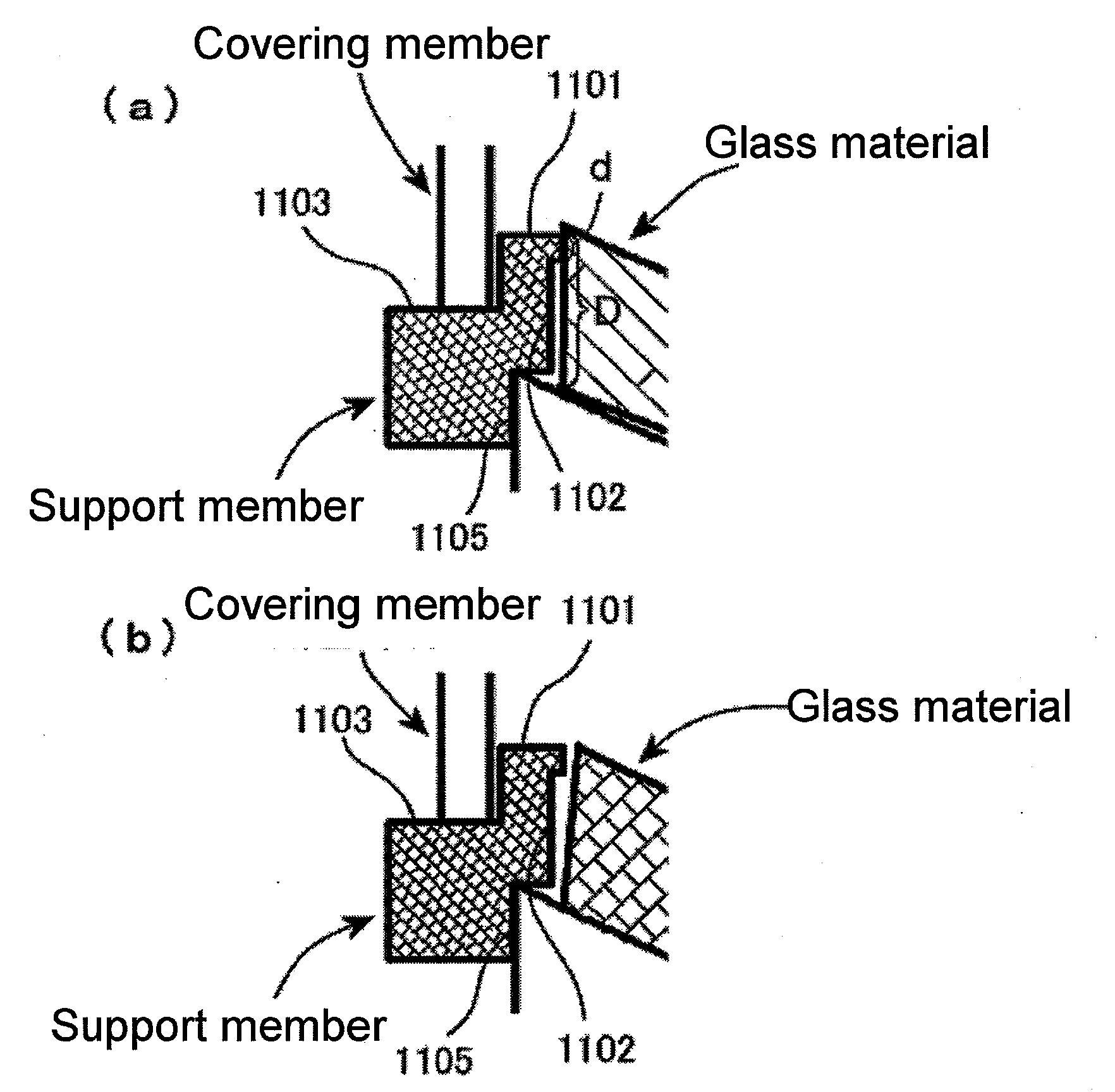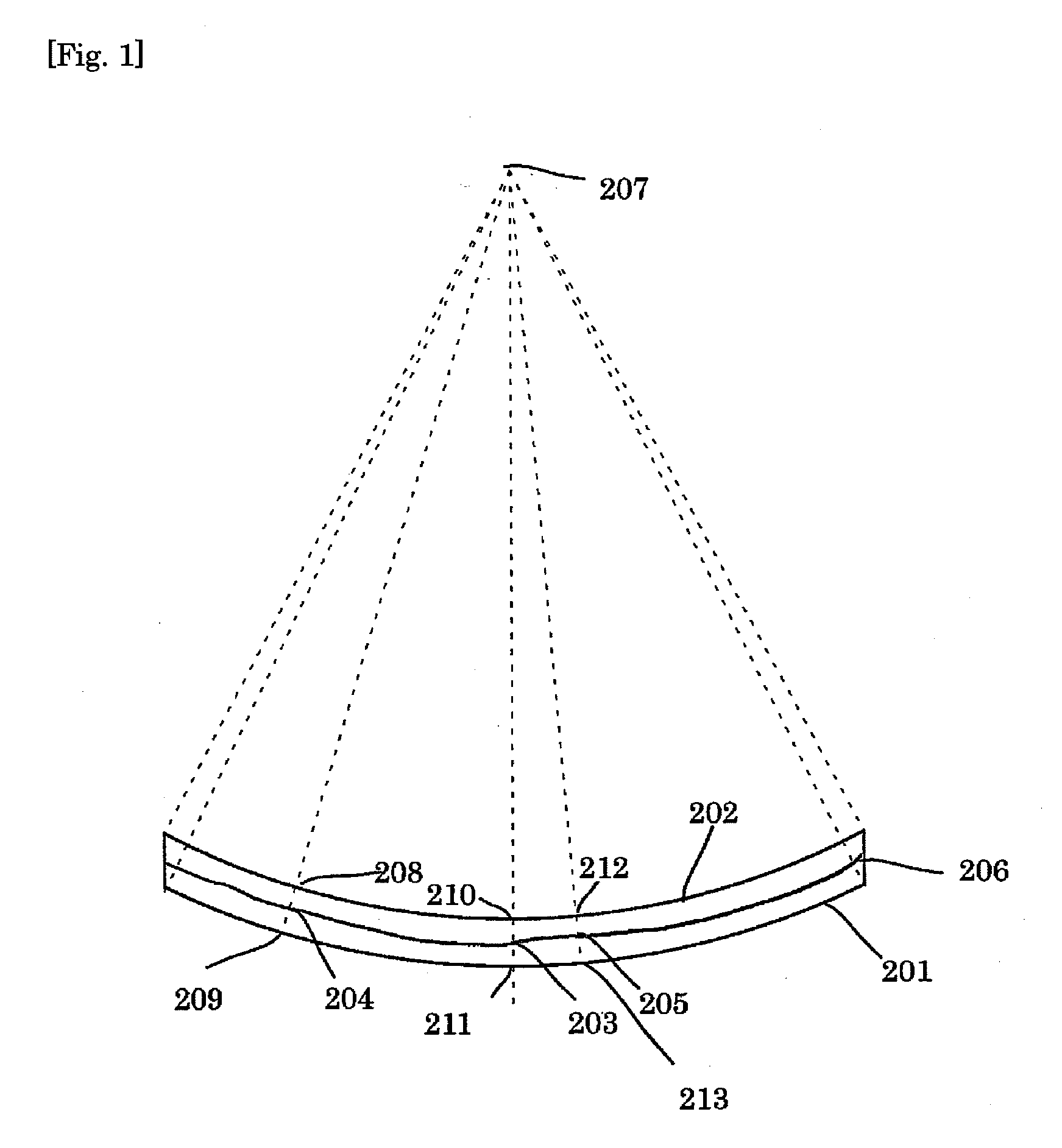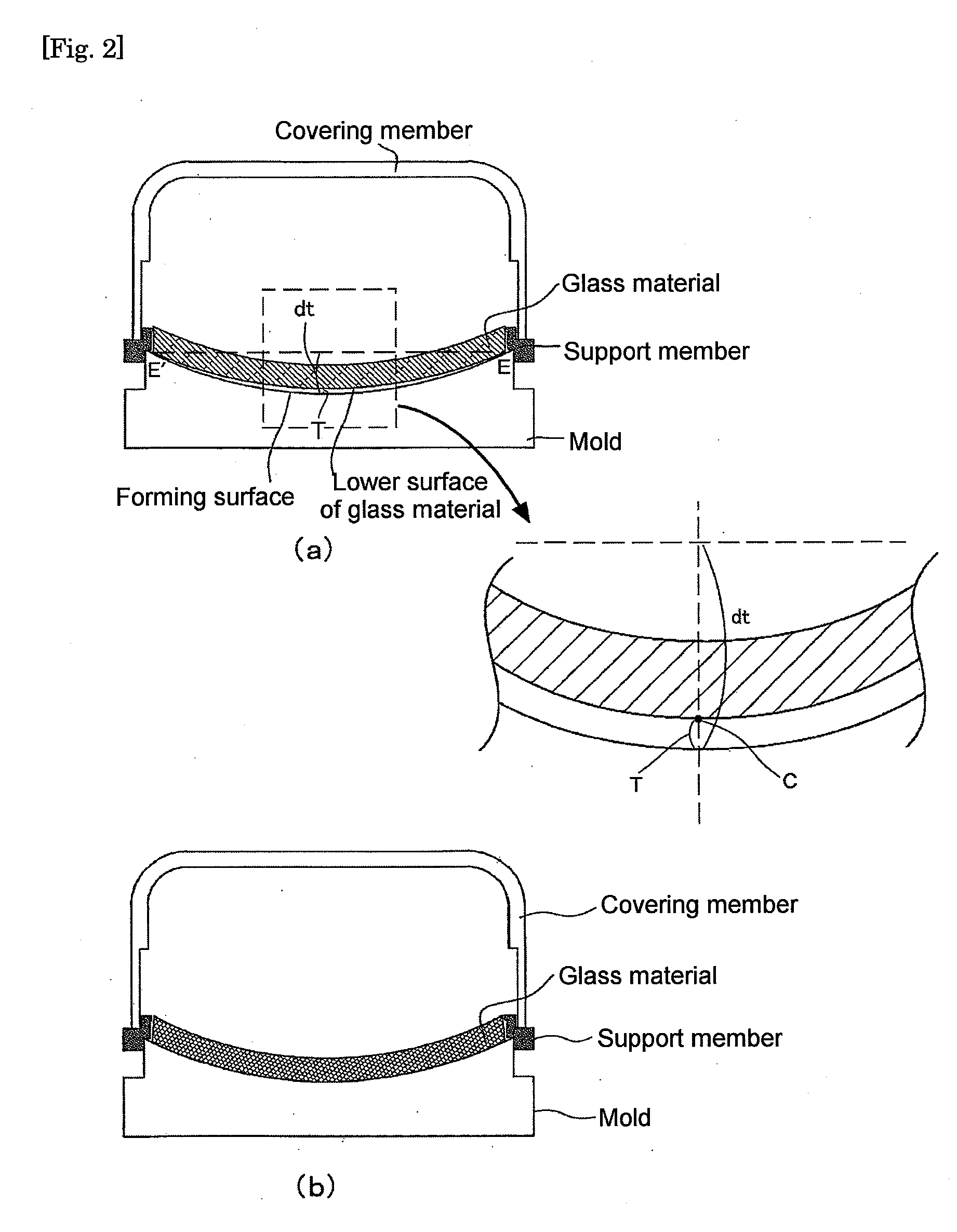Method of Manufacturing Formed Article, Glass Material, and Method of Determining Shape of Glass Material and Mold
a technology which is applied in the field of manufacturing formed articles, glass material, and method of determining mold, can solve the problems of difficult to transfer such a complex shape with high precision to the upper surface of glass material, difficult to control the shape of the upper surface, and difficult to change the shape of glass material in a complex manner. achieve the effect of high precision and easy and simple determination
- Summary
- Abstract
- Description
- Claims
- Application Information
AI Technical Summary
Benefits of technology
Problems solved by technology
Method used
Image
Examples
Embodiment Construction
[0041]The present invention will be described in greater detail below.
[0042]The method of manufacturing a formed article of the present invention is a method of manufacturing a formed article comprising forming an upper surface of a glass material that has been positioned on a forming surface of a mold to obtain the formed article by heating the glass material to a temperature permitting deformation to bring a lower surface of the glass material into tight contact with the forming surface, wherein glass having upper and lower surfaces being spherical in shape is employed as the glass material, a mold having a forming surface being a free-form surface other than a spherical surface is employed as the mold, and the upper surface of the glass material is formed into a roughly offset surface relative to the forming surface of the mold.
[0043]In the method of manufacturing a formed article of the present invention, the upper surface of the glass material is formed into a roughly offset su...
PUM
| Property | Measurement | Unit |
|---|---|---|
| Thickness | aaaaa | aaaaa |
| Diameter | aaaaa | aaaaa |
| Temperature | aaaaa | aaaaa |
Abstract
Description
Claims
Application Information
 Login to View More
Login to View More - R&D
- Intellectual Property
- Life Sciences
- Materials
- Tech Scout
- Unparalleled Data Quality
- Higher Quality Content
- 60% Fewer Hallucinations
Browse by: Latest US Patents, China's latest patents, Technical Efficacy Thesaurus, Application Domain, Technology Topic, Popular Technical Reports.
© 2025 PatSnap. All rights reserved.Legal|Privacy policy|Modern Slavery Act Transparency Statement|Sitemap|About US| Contact US: help@patsnap.com



